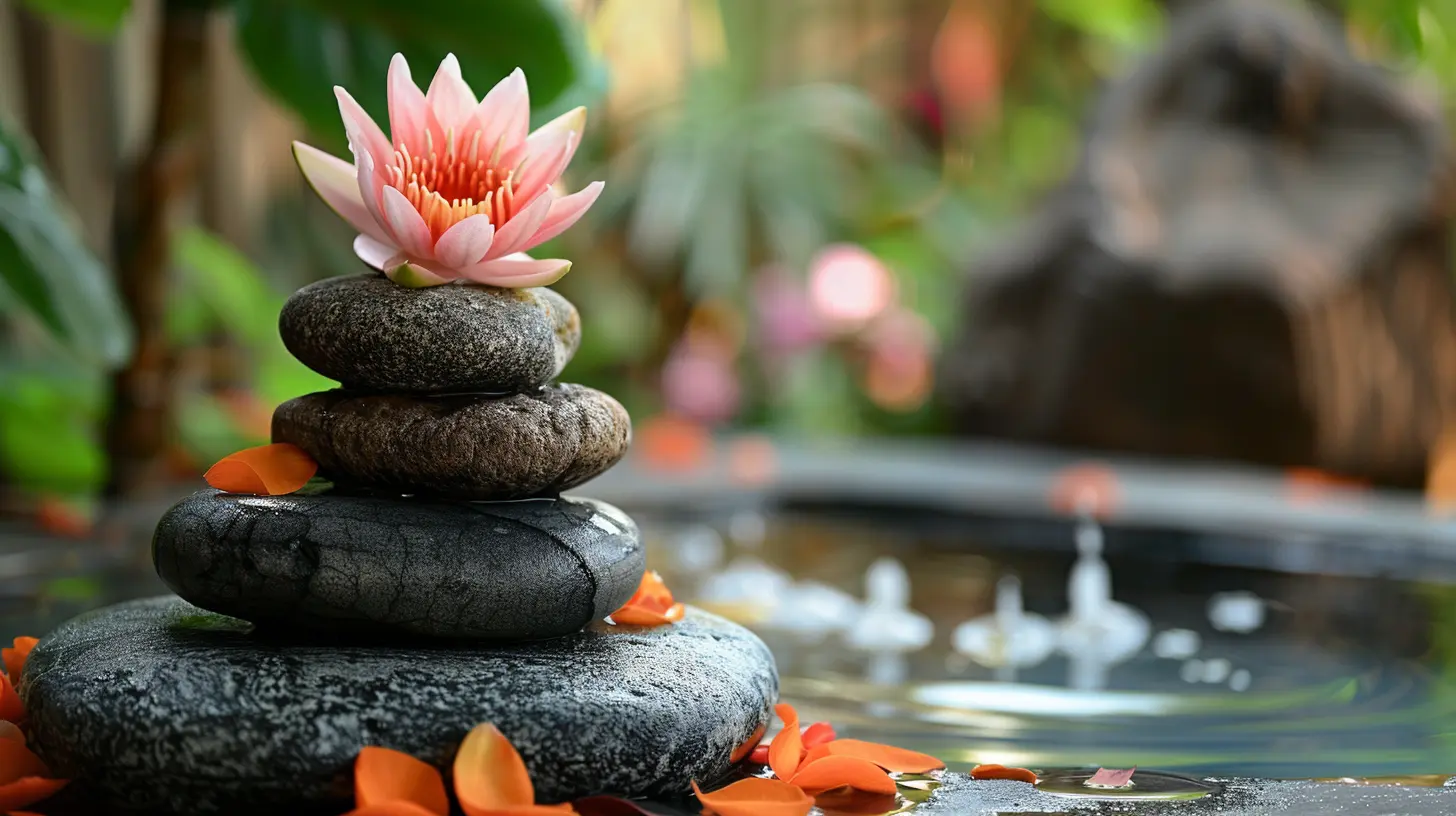Integrating Yoga and Meditation in Therapy for Holistic Healing
7 October 2025
Ever tried to explain a bad mood and just ended up saying, “I’m off today”? Yeah, we’ve all been there. Life throws curveballs—stress, anxiety, trauma, burnout—and sometimes, talking it out just doesn’t cut it. Therapy is a wonderful thing, but imagine giving it a little boost... not with more medication or endless worksheets, but with something ancient, soulful, and downright grounding: yoga and meditation.
Let's dive into how integrating yoga and meditation in therapy can be the secret sauce to holistic healing. And no, you don’t have to be a flexible gym rat or a full-time monk to benefit from it. Pinky promise.
What Exactly Is Holistic Healing?
Before we roll out our yoga mats, let's talk about what we mean by "holistic healing."Holistic healing looks at the whole person. Not just your thoughts. Not just your physical health. But your mind, body, and soul as a connected unit. It’s like understanding that your favorite song isn’t amazing just because of the lyrics—it’s the lyrics, the beat, the vibe, the whole package, right?
Traditional therapy focuses a lot on the mental. Holistic therapy says, “Hey, let’s not leave your body and spirit behind in this conversation.”
The Connection Between Body and Mind: Not Just a Trend
You’ve probably heard phrases like “mind-body connection” tossed around like avocado on toast. But this isn’t some passing wellness trend.Science is catching up to what yogis have known for centuries: our bodies carry emotional memories. Stress doesn’t only make us feel mentally exhausted—it can literally cause stomach aches, tension in the shoulders, or fatigue. Ever felt like crying during a deep stretch in yoga? Yep. That’s your body releasing emotional baggage.
Yoga and meditation give us a way to physically work through what we’re feeling emotionally. And when combined with therapy? That’s where the magic happens.
Why Integrate Yoga and Meditation into Therapy?
Great question. Let’s unpack this one bit by bit.1. Reducing Stress and Anxiety Naturally
Yoga encourages breathwork and gentle movement, which tells your nervous system, “Hey, it’s okay. You can chill now.” Meditation helps you notice your thoughts instead of getting dragged around by them.Together, they lower cortisol (your stress hormone) and increase serotonin (your happy hormone). And when done regularly, they’re like giving your overworked brain a mini-vacation.
2. Boosting Emotional Awareness
You ever sit down in therapy and draw a complete blank when your therapist asks, “So, how are you really feeling?” Yeah, same. Yoga and meditation help bridge that gap between what's happening in your body and what you're experiencing emotionally.They increase interoceptive awareness—which is a fancy way of saying they help you tune in to what’s going on inside. That means you can better identify emotions as they arise and talk about them more clearly in therapy.
3. Grounding During Trauma Work
For people healing from trauma, talk therapy can sometimes be overwhelming on its own. Yoga offers grounding tools like focusing on breath or feeling the floor beneath you. Meditation helps foster a sense of inner calm, teaching you that it’s okay to sit with discomfort—as long as you feel safe.Used together, these tools can make therapy feel less like diving into the deep end without a life jacket, and more like wading in with a floatie.
4. Creating Routine and Structure
Many folks struggling with mental health issues find daily routines difficult to maintain. The simple structure of a yoga or meditation session—even just ten minutes—can build a sense of discipline, predictability, and self-trust. That structure supports the work done in therapy, like puzzle pieces clicking into place.
Okay, But What Does It Actually Look Like in Therapy?
Let’s paint a picture.You're in therapy. Maybe it's a traditional setting—you and your therapist in comfy chairs. Or maybe you’re doing teletherapy in your pajamas (no judgment). Either way, imagine your therapist invites you to take a few deep breaths before diving into heavy topics.
They might guide you through a short body scan meditation, helping you notice tension in the body. Later, maybe they encourage you to try a few simple restorative yoga poses—nothing twisty or circus-y, just gentle. Suddenly, your body becomes part of the conversation.
Or maybe they suggest homework that includes mindful walking or meditating five minutes before journaling. These are small, doable ways yoga and meditation can be woven into therapy without it feeling overwhelming.
And don’t worry—you don’t need to balance on your head or chant “Om” like a pro. It’s not about performance; it's about presence.
Who Can Benefit?
Spoiler alert: almost everyone. But let’s break it down.PTSD and Trauma Survivors
Yoga-based approaches like Trauma-Sensitive Yoga have been shown to reduce PTSD symptoms. The slow, mindful movement gives survivors some say over their bodies when trauma may have taken that sense of control away.People with Anxiety and Depression
Meditation helps quiet the mental hamster wheel, while yoga moves stagnant energy. It’s like decluttering your mental inbox.Those Battling Burnout
If your brain feels like a 50-tab browser at all times, yoga and meditation are like the “reset” button you didn’t know you needed.Teens and Young Adults
This group often struggles to articulate emotions. Mindful movement and breathwork can be powerful tools to express what words can't.Tips for Getting Started
Ready to dip your toes in? Here’s how you can start integrating yoga and meditation into your own healing journey—even outside of therapy.Start Small
You don’t need an hour-long practice to start. Try 5 minutes of deep breathing or a single yoga pose like child’s pose. Consistency > intensity.Find What Feels Good
Not every style of yoga or meditation will vibe with you. Explore. Maybe it's yin yoga. Maybe it’s guided meditation with someone who has a soothing voice. Follow what feels right.Talk to Your Therapist
If you're already in therapy, ask your therapist about integrating these practices. They might even have resources or referrals for therapists trained in yoga-informed therapy.Use Apps and YouTube
There are tons of wonderful (and free) tools out there. Try apps like Insight Timer or YouTube channels like Yoga with Adriene. No studio, no problem.A Few Gentle Reminders
Before you go ordering organic incense and yoga blocks on Amazon Prime, a few things to keep in mind:- You don’t have to be good at yoga or meditation. This isn’t about “achieving” anything.
- Some emotions might bubble up during these practices. That’s okay. It’s all part of the healing.
- Always go at your own pace. If something doesn’t feel right, skip it or modify it.
- No wellness shaming here. It’s okay to be a work in progress.
Real Talk: Why This Matters
It’s easy to feel like healing is all in your head. But your body has a say too. And when you bring yoga and meditation into the therapeutic process, you’re giving yourself the full-spectrum glow-up your mental health truly deserves.Think of it like this: therapy is the soil and water. Yoga and meditation are the sunlight. Together? You grow, baby, grow.
You’re not just surviving—you're slowly, gently stepping into thriving.
So roll out your mat, close your eyes for a moment, and take a deep breath. Healing may not be linear, but it's absolutely possible—one mindful breath at a time.
Final Thoughts
Integrating yoga and meditation in therapy isn’t some wellness gimmick. It’s rooted in science, supported by ancient wisdom, and most importantly, it feels good. It reminds us that we are whole people, with minds that think, bodies that hold, and hearts that feel.If you’re looking for a way to feel more grounded, more present, and more you—this path might be just what you need.
Namaste... or just, you know, have a good day.
all images in this post were generated using AI tools
Category:
Therapy TechniquesAuthor:

Eliana Burton
Discussion
rate this article
1 comments
Alessia Clarke
This article beautifully highlights the benefits of combining yoga and meditation in therapy, showcasing their potential to promote holistic healing and enhance mental well-being. A must-read!
October 24, 2025 at 4:37 PM

Eliana Burton
Thank you for your kind words! I'm glad you found the article valuable for exploring the integration of yoga and meditation in therapy.


